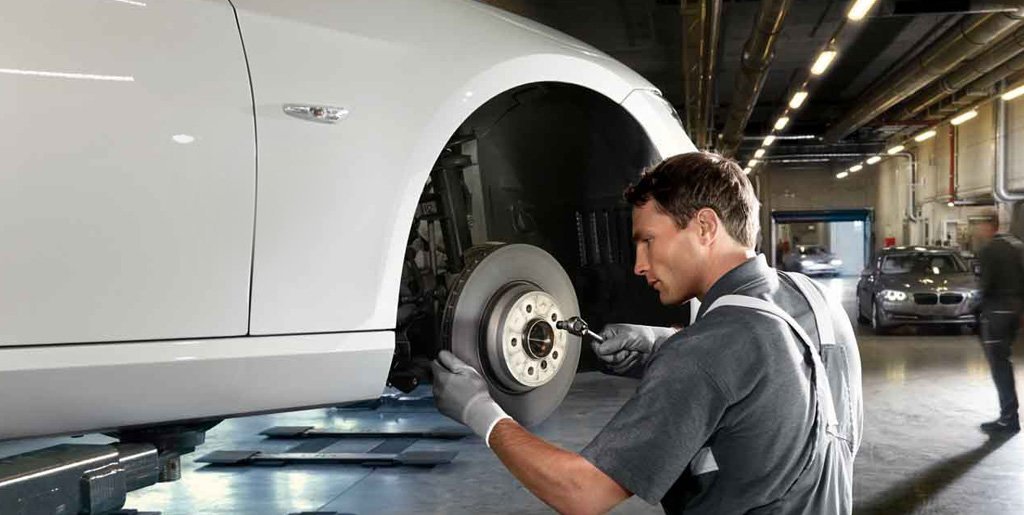
1. Introduction
-
Why brakes are critical to vehicle safety
-
Role of brake inspection in accident prevention
-
Overview of inspection frequency recommendations
2. Understanding Brake Systems
-
Types of brake systems (disc, drum, regenerative braking in hybrids/EVs)
-
Key components: brake pads, rotors, calipers, brake lines, master cylinder, fluid, ABS sensors
-
How braking works (basic physics — friction, hydraulic pressure, heat dissipation)
3. Why Brake Inspections Are Essential
-
Safety — preventing brake failure
-
Cost savings — early detection prevents expensive repairs
-
Legal compliance (some states/regions require periodic safety inspections)
-
Maintaining optimal stopping distance
4. When to Get a Brake Inspection
-
Mileage-based recommendations (e.g., every 10,000–15,000 miles or annually)
-
Signs you need one now:
-
Squealing, grinding, or clicking noises
-
Vibration or pulsation when braking
-
Pulling to one side
-
Soft or spongy brake pedal
-
Dashboard brake warning light
-
-
Seasonal or trip-based checks (before long road trips or winter driving)
5. The Professional Brake Inspection Process
-
Visual Inspection
-
Brake pad thickness measurement
-
Rotor surface check (scoring, grooves, rust)
-
Caliper condition
-
Brake line inspection for leaks or corrosion
-
-
Functional Tests
-
Brake pedal feel and travel
-
ABS system diagnostics
-
Brake fluid level and quality testing
-
-
Detailed Measurements
-
Rotor runout and thickness
-
Pad wear patterns (indicating alignment or caliper issues)
-
6. DIY Brake Inspection: What You Can Check at Home
-
Tools needed: jack stands, lug wrench, flashlight, caliper gauge
-
Step-by-step process for safe checking
-
What you can realistically assess vs. what should be left to a mechanic
-
Safety precautions
7. Common Brake Problems Found During Inspections
-
Worn brake pads
-
Warped rotors
-
Leaking brake lines
-
Contaminated brake fluid
-
Sticking calipers
-
ABS sensor failures
8. Repair and Replacement Recommendations
-
How mechanics determine whether to resurface or replace rotors
-
When brake fluid flushes are necessary
-
OEM vs aftermarket brake parts
-
Cost ranges for common brake repairs
9. Preventive Brake Maintenance Tips
-
Driving habits that extend brake life
-
Importance of regular fluid changes
-
Keeping wheels and brakes clean
-
Monitoring brake performance over time
10. Cost of Brake Inspections
-
Average inspection costs (often free with certain services)
-
Differences between dealership, independent shop, and chain stores
-
How inspections are bundled with other maintenance packages
11. Brake Inspections for Different Vehicle Types
-
Passenger cars
-
Trucks and SUVs
-
Performance vehicles
-
Hybrids and EVs (including regenerative braking system checks)
-
Commercial and fleet vehicles
12. Legal & Insurance Considerations
-
How inspection records can help in accident disputes
-
Required inspections for commercial drivers
-
State-mandated safety checks
13. Choosing the Right Shop for a Brake Inspection
-
Certifications to look for (ASE, manufacturer-certified)
-
Reputation and reviews
-
Transparency in reporting and pricing
14. Myths & Misconceptions About Brake Inspections
-
“If my brakes aren’t making noise, they’re fine”
-
“Brake inspections are just a way for shops to upsell”
-
“All brake pads last the same amount of time”
15. Conclusion
-
Restating importance of regular brake inspections
-
Safety and peace of mind benefits
-
Encouragement to adopt a proactive approach
